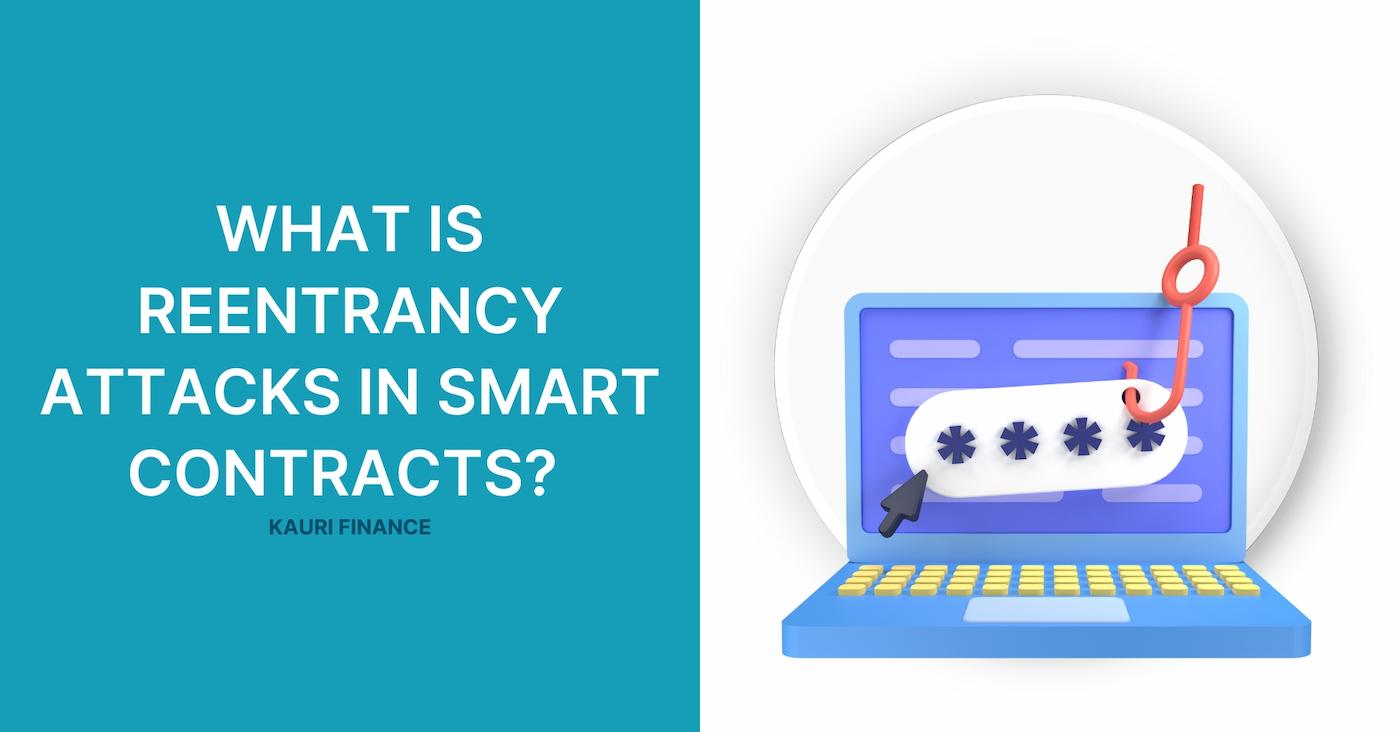
What is Reentrancy Attacks in Smart Contracts?
- What Are Reentrancy Attacks?
- Common Weaknesses in Smart Contracts
- Historical Context and Impact
- Step-by-step Breakdown of a Reentrancy Attack
- 1. External Calls and Their Risks
- 2. Recursive Calls Exploiting the Contract
- 3. Consequences of State Manipulation During the Attack
- Strategies for Preventing Reentrancy Attacks
- In-depth Analysis of the DAO Hack
- Exploitation of Reentrancy Vulnerability
- Conclusion

Smart contracts have revolutionized the way we think about digital agreements and transactions on the blockchain. By automating processes and eliminating intermediaries, smart contracts offer a new level of efficiency and trust. However, like any technological innovation, they are not without their vulnerabilities. One of the most critical challenges in smart contract design is ensuring security against various types of attacks, which can exploit these vulnerabilities to devastating effect.
Reentrancy attacks, in particular, pose a significant threat. These occur when a smart contract sends an external call to another contract before it finishes executing its own instructions, leaving it open to interference and potential manipulation by the called contract. This can lead to unexpected behaviors, such as the duplication of withdrawal transactions, leading to substantial financial losses.
Understanding these vulnerabilities is crucial for developers and stakeholders in the blockchain ecosystem. It not only helps in building more secure smart contracts but also in fostering trust in decentralized technologies. In this article, we will explore the mechanics of reentrancy attacks, examine notable historical incidents, and discuss strategies to mitigate such risks effectively.
What Are Reentrancy Attacks?
Reentrancy attacks occur in the blockchain environment when a smart contract makes an external call to another contract before it settles its own state. During this window, the external contract can make calls back to the original contract, potentially interfering with its execution. This vulnerability can be exploited to perform unauthorized actions such as withdrawing funds repeatedly before the first transaction is recorded, leading to significant financial losses.
In a reentrancy attack, the called contract re-enters the calling contract’s function before the first execution completes. For example, if a function intended to send funds does not first reduce the sender's balance and instead calls an external contract, that external contract can call back into the original function, initiating another transfer before the balance update is executed. This can lead to multiple withdrawals, draining funds from the contract.
Common Weaknesses in Smart Contracts
Smart contracts are powerful but not perfect. They have several vulnerabilities that can be exploited if not properly addressed during development:
- Inadequate Input Validation: Smart contracts often fail to validate inputs adequately, which can allow attackers to pass malicious data to the contract functions. Such oversight can lead to unintended contract behavior and security breaches.
- Improper Application of Business Logic: If business rules are not correctly implemented within the contract, logical errors can occur. These might allow attackers to manipulate the contract’s functions for unintended outcomes, such as bypassing security checks or misdirecting funds.
- Insecure External Calls: When a smart contract interacts with external contracts or data sources, it exposes itself to additional risks. If the external calls are not handled securely, they can become entry points for attacks, such as reentrancy.
Historical Context and Impact
One of the most infamous examples of a reentrancy attack is the DAO (Decentralized Autonomous Organization) hack, which occurred in 2016 on the Ethereum blockchain. An attacker exploited a reentrancy vulnerability in the DAO's smart contract, recursively calling its withdrawal function to extract approximately 3.6 million Ether, worth around $50 million at the time. This event not only led to significant financial losses but also shook confidence in the security of smart contracts and had a lasting impact on the Ethereum community, including a controversial blockchain fork.
Reentrancy attacks have also plagued various DeFi protocols, resulting in substantial financial damages:
- Uniswap and Lendf.Me suffered losses due to reentrancy attacks where attackers exploited vulnerabilities similar to the DAO incident.
- BurgerSwap reported a loss of around $7.2 million due to a combination of reentrancy and other exploits.
- Cream Finance and Siren Protocol together faced millions in losses as attackers exploited reentrancy vulnerabilities to manipulate transaction orders and withdraw funds.
These incidents highlight the ongoing risks associated with reentrancy in smart contracts and the critical need for robust security measures in the DeFi sector.
Step-by-step Breakdown of a Reentrancy Attack
1. External Calls and Their Risks
When a smart contract executes an external call, it interacts with an outside contract or service. These calls are risky because the external contract could be controlled by an attacker or behave in an unexpected manner, influencing the calling contract's execution.
2. Recursive Calls Exploiting the Contract
In a typical reentrancy scenario, an attacker's contract might receive control during an external call and then call back into the original contract’s function that hasn't yet finished executing. This can be particularly damaging if the original function involves financial transactions.
3. Consequences of State Manipulation During the Attack
The recursive calls can manipulate the contract’s state by repeatedly executing certain functions — for example, withdrawing funds. Since the state update (like reducing the balance) only happens after the external call, each re-entrant call can exploit the original state, leading to multiple unauthorized actions being executed within a single transaction.
These mechanics show how reentrancy can turn simple vulnerabilities into complex exploits, emphasizing the importance of secure contract design and thorough testing to prevent such attacks.
Strategies for Preventing Reentrancy Attacks
- Using Known Secure Patterns like the "Checks-Effects-Interactions" Pattern: This design pattern advises developers to make state changes before making external calls and interacting with other contracts. By reordering transactions to first check conditions (checks), then update states (effects), and finally interact with external contracts (interactions), this pattern reduces the risk of reentrancy.
- Importance of Thorough Testing and Audits: Regular and comprehensive testing, including unit tests, integration tests, and stress tests, are crucial. Additionally, third-party security audits should be conducted before deploying smart contracts to production. These practices help identify and mitigate vulnerabilities, including those that could lead to reentrancy attacks.
- Utilizing Reentrancy Guards in Smart Contract Development: Developers can implement reentrancy guards, which are mechanisms that prevent functions from being called again before they finish executing. This is often achieved through the use of locks or modifiers that block additional entries into critical functions until completion.
These preventative strategies are vital in building secure smart contracts and protecting the ecosystem from the potentially devastating effects of reentrancy attacks.
In-depth Analysis of the DAO Hack
Exploitation of Reentrancy Vulnerability
DAO hack was primarily due to a reentrancy vulnerability in the smart contract. The attacker repeatedly called the "splitDAO" function, which enabled withdrawing funds to a child DAO. The contract’s logic allowed external calls before updating the internal state (balance), which the hacker exploited to recursively withdraw Ether multiple times before the balance was decremented.
Financially, the DAO hack led to the theft of 3.6 million Ether, which was worth around $50 million at the time, significantly impacting the investors' funds. The reputational damage was extensive, leading to a loss of trust in Ethereum and the broader viability of smart contracts. This incident was so significant that it resulted in a hard fork of the Ethereum blockchain, creating Ethereum (ETH) and Ethereum Classic (ETC).
The DAO hack serves as a critical reminder of the importance of security in smart contract design and the potential consequences of overlooking vulnerabilities.
Conclusion
DAO hack and numerous other incidents underscore the critical need for robust security in smart contract design. Ensuring security is not merely a best practice but a necessity to protect assets, maintain trust, and promote the adoption of blockchain technology. Developers must prioritize secure coding patterns, thorough testing, and regular audits to mitigate vulnerabilities, particularly reentrancy attacks, which pose significant risks to the integrity and reliability of smart contracts.
Given the rapidly evolving landscape of blockchain technology, continuous education on smart contract vulnerabilities is crucial. Platforms like Kauri Finance offer valuable resources to keep developers and investors informed about the latest security practices and threat mitigation strategies. Staying updated on potential vulnerabilities and security measures is essential to build resilient smart contracts and safeguard the blockchain ecosystem.
